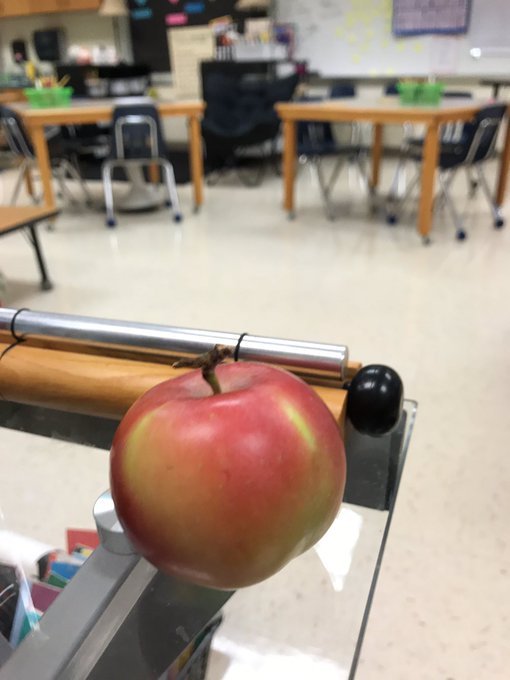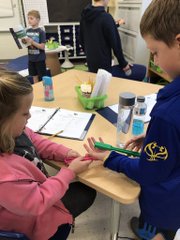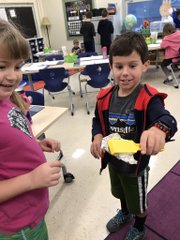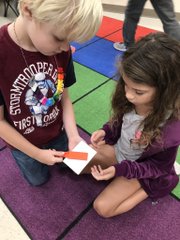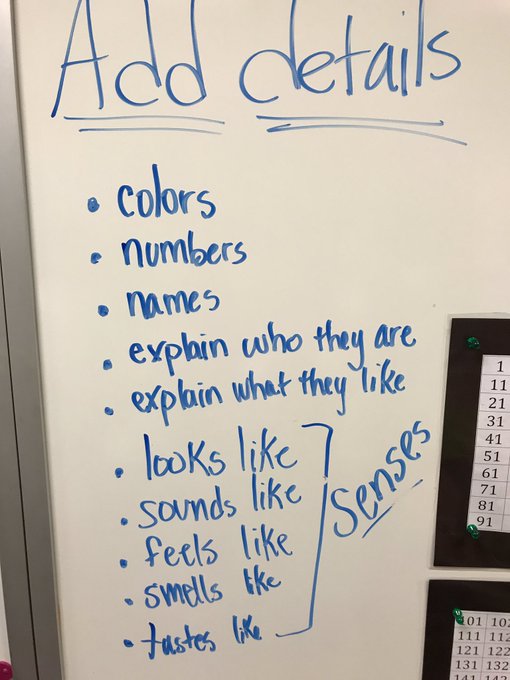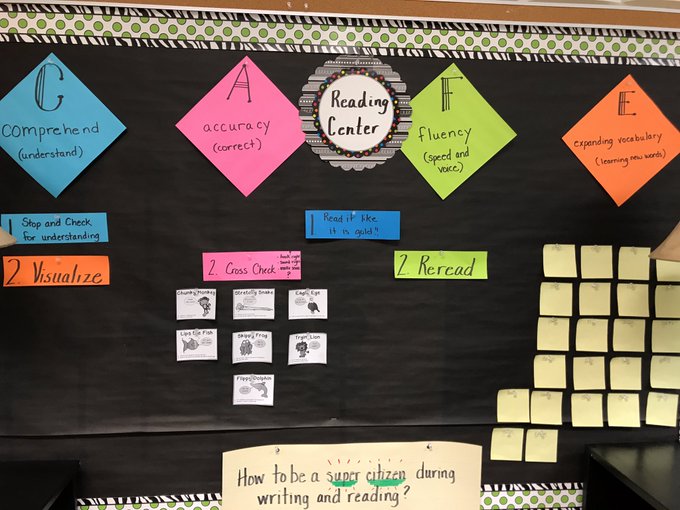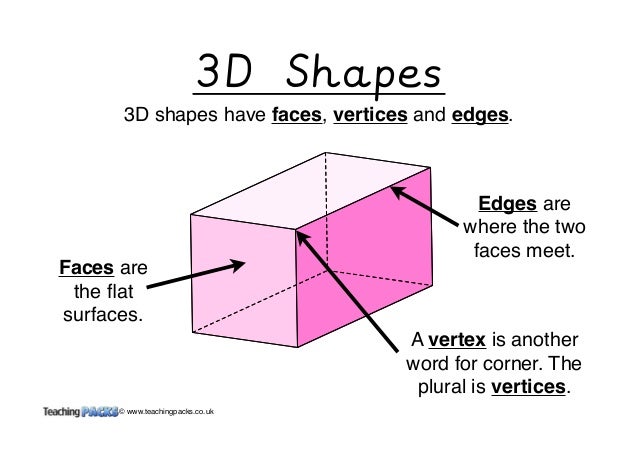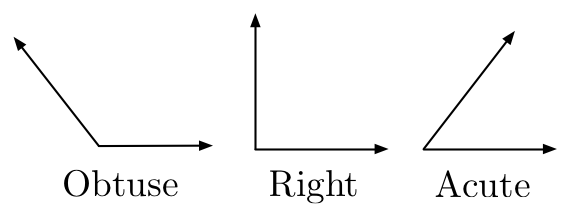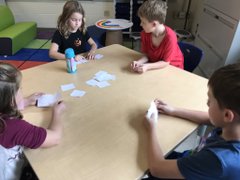OUR FIELD TRIPS:



OUR PIE PARTY:



Science:
Matter through fun experiments has been the focus of our Science unit. Students have poked balloons to determine the matter inside, hypothesized, discussed, then observed the actual matter inside the balloon. Honey butter was created from a liquid and lots of shaking! Many were hesitant to taste it, but some came back for seconds!







OUR BUTTER:

Ways to help at home:
-Simply Google "matter experiments" and you will find a ton! Bill Nye the Science Guy has some fun videos. Here is a link that you can use as well.
Social Studies:
We have just introduced Maps and Globes this week. Students are learning about the parts of a map (Title, Scale, Key/Legend, and Compass Rose). We will be learning about rivers, lakes, and mountain ranges in the USA.
Ways to help at home:
- Have students create a map of their bedroom!
Word Study:
Each student is working at their current level. I work with each of them every day to verify they have sorted correctly, we then review the rules of each sort, they write the sort, then they do an activity each day. (This is the best part!)
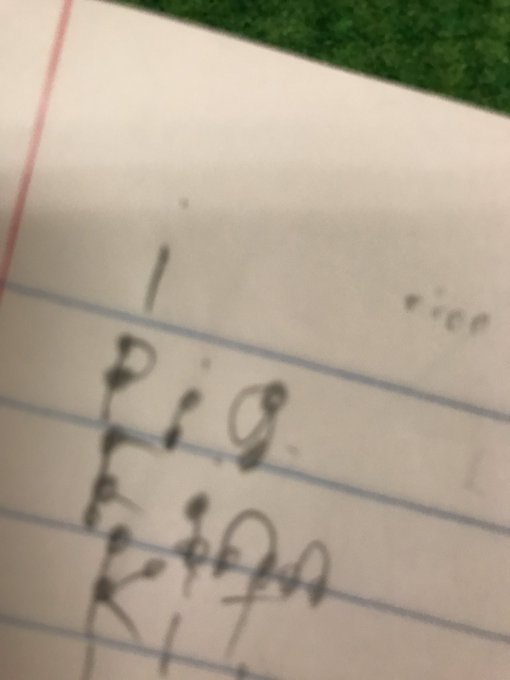

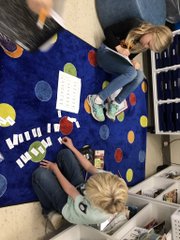

Writing:
Students continue to work in small groups to write a short story that could be performed by the Henley drama students. We are working on writing paragraphs! Writing stories in an organized way is the easiest way to teach this because as they write about the character, that's the first paragraph. As they change from the character and begin to write about the setting, that's the second paragraph. As they write about the problem, they understand they are changing the topic, so that's the third paragraph. They write about the solution, so that's the fourth paragraph.
Students will be getting their homework journals tomorrow. This is homework! I use the journals as a way to practice letter writing (proper format) and get to know each student. All homework is due on Friday!
Ways to help at home:
Have fun with your child writing together. Show a picture (or two for choice) and ask students to describe the picture using details, then create a story together.
Reading:
We have been talking about SCHEMA in class. Schema is all the information that is in your head about one topic. We use schema before we read and while we are reading. We then add to our schema as we read more about that topic.
I just introduced making connections to what we are reading. As students read, they connect a part in their book to either something that has happened to them personally (Text-to-Self), something that they have read about (Text-to-Text), or something that they have heard about that has happened in the world (Text-to-World).
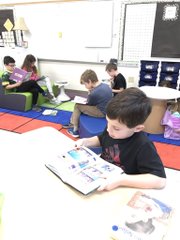
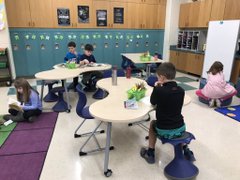
Ways to help at home:
- Practice makes perfect! The more reading your child does, the better they will get! Research shows between 20-30 minutes per day helps growing readers improve more rapidly.
- I want students to LOVE to read, just as I do! To get them to love it, they must love the story. Let your child choose what to read. If they are excited and engaged in the story, they will want to read more and more.
- Give them their own comfy space and let them just read! :)
- Ask your child about ways they connected to the book they read. As them if anything in what they've read has reminded them of something that has happened to them. You can even prompt them as reading (do you remember when...?).
Math:
Students did very well with Geometry! We then moved into fractions (only up to eighths - with some extension work to 15ths) and symmetry. Students were able to recognize fractions, make fractions, and debate which was the right fraction and why.
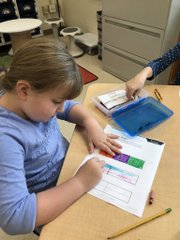



We are now moving into adding larger numbers. We are talking about using a tenrod and ones to show numbers and including an equation, such as this...
lll.. to be 30 + 2 = 32
Very quickly we will be moving to example 1 below where students will be breaking apart numbers into tens and ones, then adding them back together.
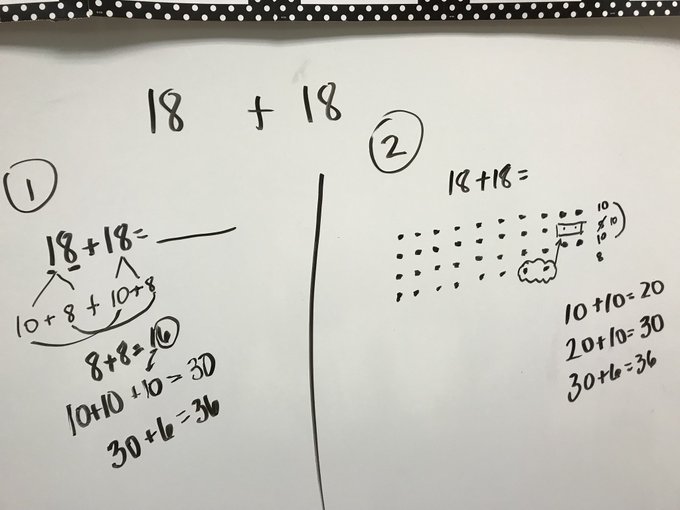
Students used different strategies to buy 6 items for Thanksgiving dinner using only $25!

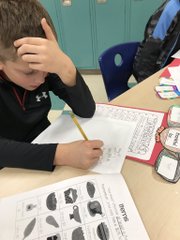


Ways to help at home:
- Continue to create word problems and have them use their own strategy to solve them.
- Ask your child to tell you what 1/3 means or 2/5. Be creative. Have them look at a recipe and ask them to identify the fraction and point out that the WHOLE is a full cup. :)

